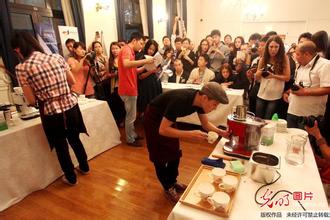Best cultivation and storage time of coffee beans after roasting
Best cultivation and storage time of coffee beans after roasting
From the point of view of the baking degree, the deeper the baking degree, the stronger the bitter taste; the lighter the baking degree, the stronger the sour taste. The choice of baking degree depends on the characteristics of the coffee bean itself. for coffee beans with strong bitterness and light sour taste, they generally choose a moderate and shallow roasting degree.
1. Shallow baking (Light)
The most mild fried culture, no fragrance and concentration to speak of, the beans are not yet ripe, with the green taste of raw beans, not suitable for grinding and drinking. It's usually used as an experiment.
2. Deep shallow baking (Cinnamon)
Also known as cinnamon baking, for the general popular degree of frying, leaving a strong sour taste. The color of beans is quite similar to that of cinnamon, so it is also called cinnamon baking and its sour taste is aggravated. It is favored by people in the western United States.
3. Shallow medium baking (Media)
The color deepens, easy to extract the original taste of coffee beans, mellow, sour and delicious. Mainly used for mixed coffee
1. Drying
In the early stage of baking, the raw beans begin to absorb heat, and the water inside gradually evaporates. At this time, the color gradually changed from green to yellow or light brown, and the silver film began to fall off, you can smell a faint smell of grass. The main function of this stage is to remove moisture, which accounts for about half of the baking time, because water is a good heat transfer conductor and helps to bake the internal material of coffee beans. Therefore, although the aim is to remove water, the baker will make good use of the temperature of the water and properly control it so that it will not evaporate too quickly; in general, it is best to control the water to reach the boiling point and turn into steam in 10 minutes. At this time, the internal material is fully cooked, and the water begins to evaporate, rushing out of the outside of the coffee beans.
2. High temperature decomposition
Baked to about 160 degrees Celsius, the water inside the beans will evaporate into gas and begin to rush out of the outside of the coffee beans. At this time, the interior of the raw bean changed from endothermic to exothermic, resulting in the first burst sound. After the bursting sound, it turns to endothermic again, and the pressure inside the coffee bean is extremely high, up to 25 atmospheric pressure. Heat and pressure begin to deconstruct the original tissue to form new compounds that create the taste and taste of coffee; at about 190 degrees Celsius, the transition between endothermic and exothermic occurs again. Of course, high temperature cracking continues to occur, coffee beans from brown to dark brown, gradually entering the stage of re-baking.
3. Cooling
Coffee must be cooled immediately after roasting, quickly stop the pyrolysis at high temperature and lock the flavor. Otherwise, if the high temperature in the beans continues to work, the aromatic substances will be burned. There are two cooling methods: one is air-cooled and the other is water-cooled. The air-cooled type needs a lot of cold air to cool the coffee beans quickly within 5 minutes. In the field of professional baking, large roasters are equipped with a tray with a rotatable driving arm; when the baking is completed, the beans are automatically fed into the tray, and the fan at the bottom of the tray is immediately activated to blow cold air. And the pushing arm stirs the coffee beans to cool them. Although the speed of the water-cooled type is slow, it is clean and does not pollute, and it can better retain the aroma of the coffee, so it is used by the selected coffee industry. The water-cooled method is to spray a layer of water mist on the surface of the coffee beans, allowing the temperature to drop rapidly. As the amount of spraying water is very important, it requires precise calculation and control, and it will increase the weight of baked beans, which is generally used in large-scale commercial baking.

Important Notice :
前街咖啡 FrontStreet Coffee has moved to new addredd:
FrontStreet Coffee Address: 315,Donghua East Road,GuangZhou
Tel:020 38364473
- Prev

How long can the half-cooked coffee beans be ground?-can you drink the coffee beans directly after grinding?
How long can the half-cooked coffee beans be kept after grinding? 1. The viscosity of coffee powder increases after being exposed to moisture, which will clog the coffee machine grinder and cause adverse effects on the machine. 2. Once coffee beans are exposed to moisture, they will easily deteriorate and become moldy, which will greatly shorten their shelf life and be harmful to their health. 3. It will affect the taste of coffee drinks, and the editor suggests that they should not be preserved well.
- Next

Introduction of taste treatment method of grinding scale for flavor description of coffee beans in Papua New Guinea
Introduction to Papua New Guinea coffee bean flavor description grinding scale taste treatment method Papua New Guinea pure natural high-quality coffee, lively and changeable flavor, full grains, light acidity, sweet and round taste, there is a variety of taste place: women in Papua New Guinea are generally subjected to barbaric domestic violence. In traditional culture, women have always been
Related
- Guji coffee producing area of Guji, Ethiopia: Humbela, Shakiso, Wulaga
- What is the most expensive variety of Qiloso in BOP multi-variety group?
- How to store the coffee beans bought home?
- Why are Yemeni coffee beans so rare now?
- Ethiopian Sidamo all Red Fruit Sun Sun Santa Vini Coffee beans
- SOE is mostly sour? What does it mean? Is it a single bean? what's the difference between it and Italian blending?
- Is Italian coffee beans suitable for making hand-brewed coffee?
- How to choose coffee beans when making cold coffee? What kind of coffee beans are suitable for making cold coffee?
- Just entered the pit to make coffee, what kind of coffee beans should be chosen?
- Can only Japan buy real Blue Mountain Coffee? What are authentic Jamaican Blue Mountain coffee beans?

